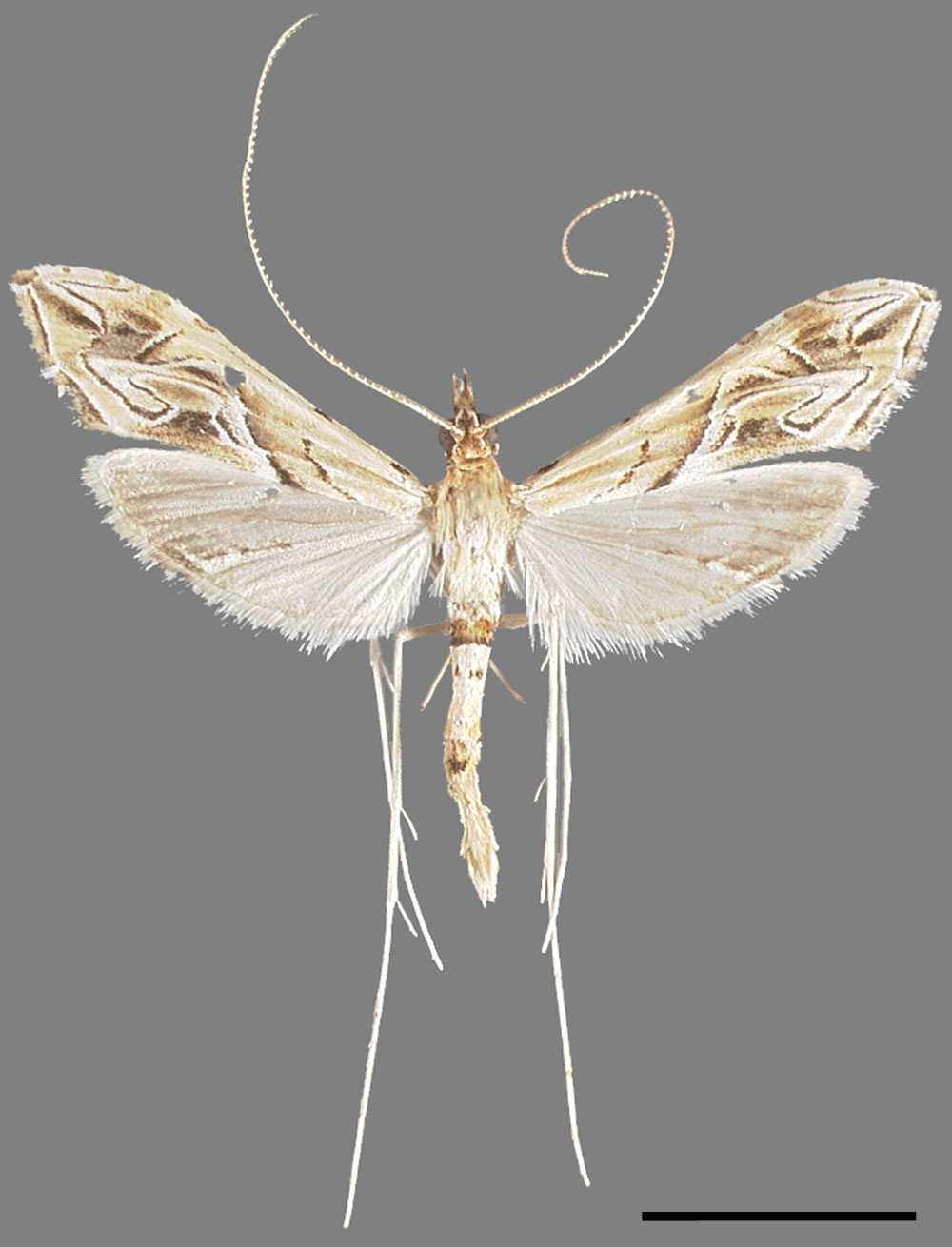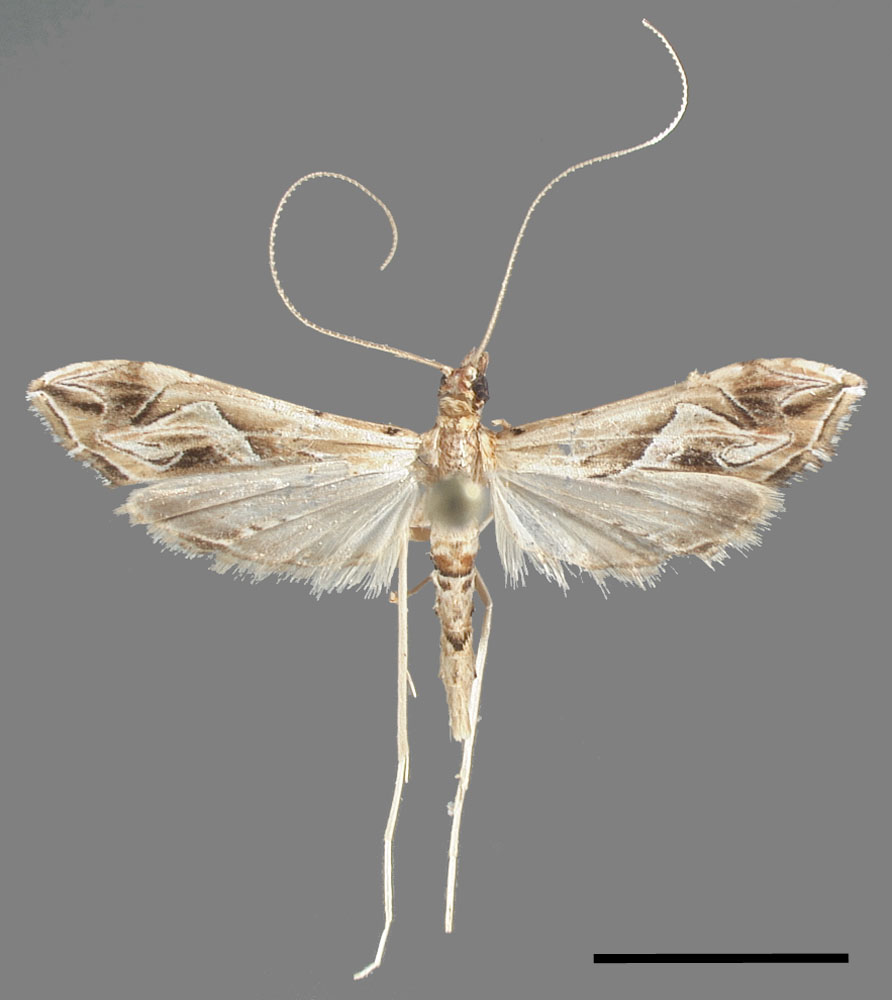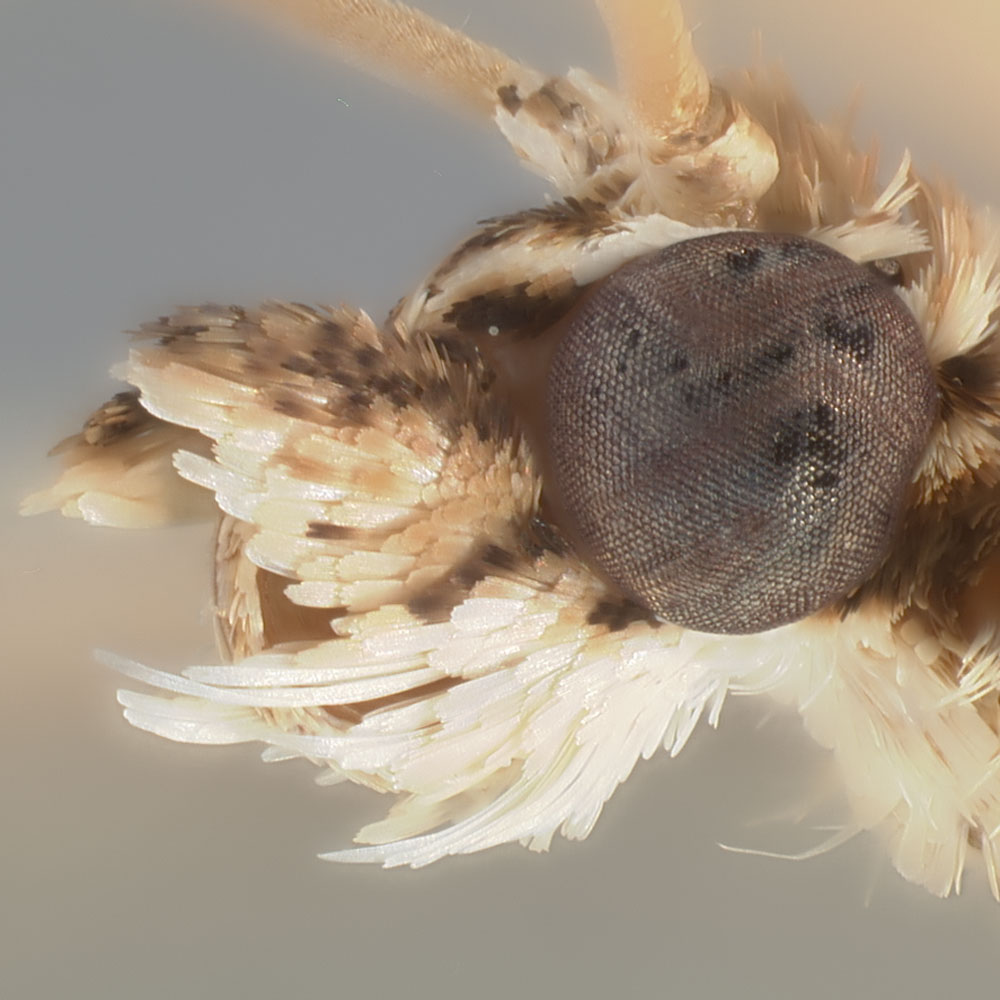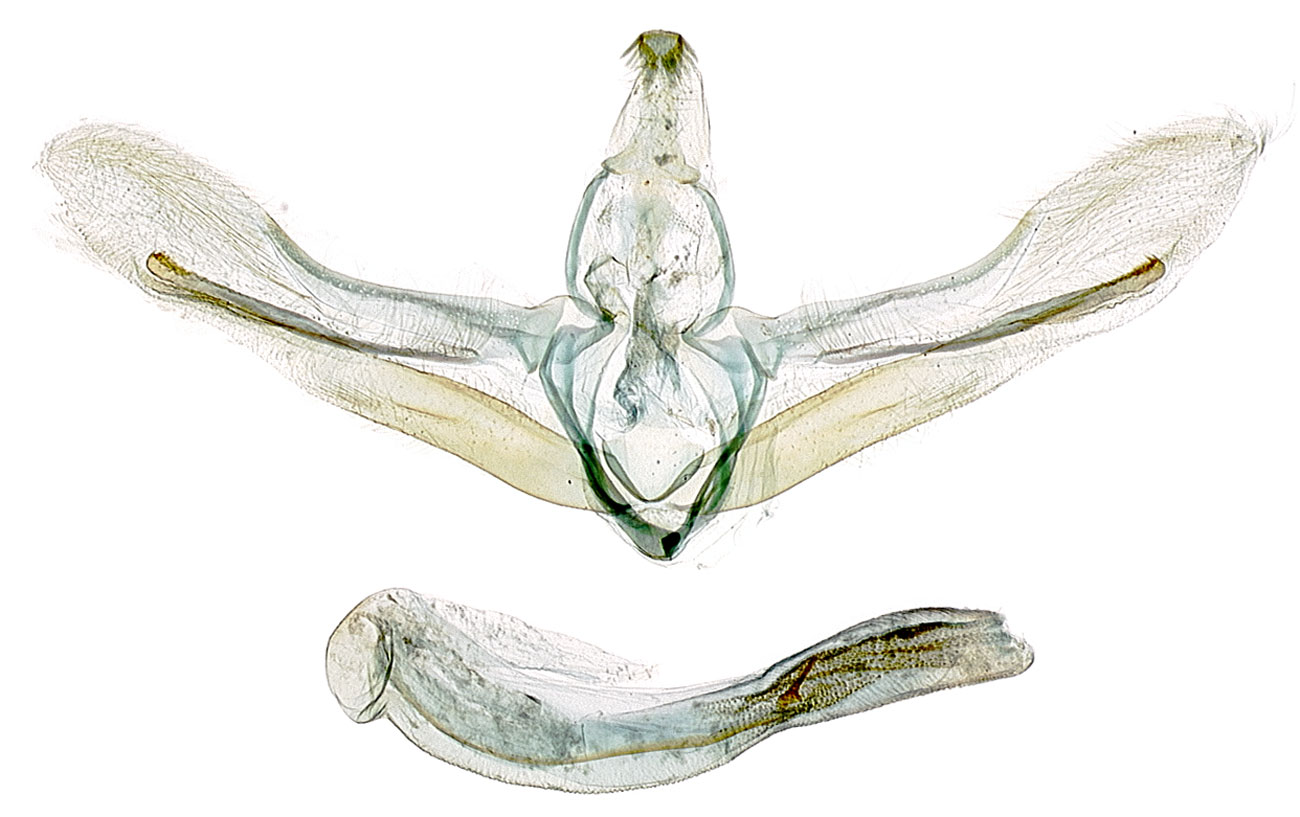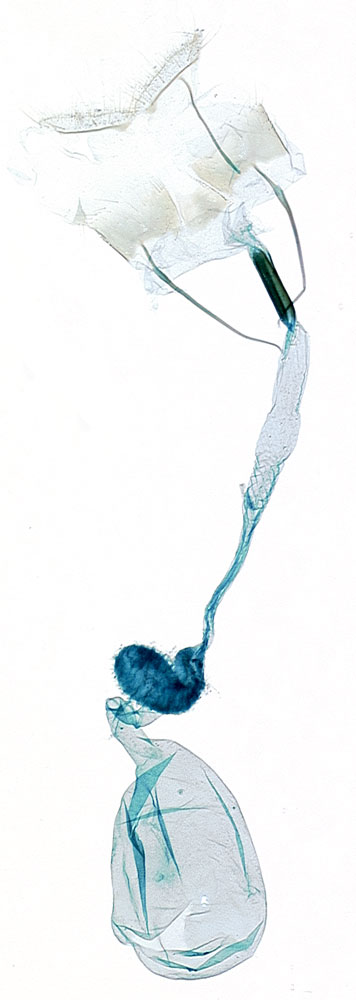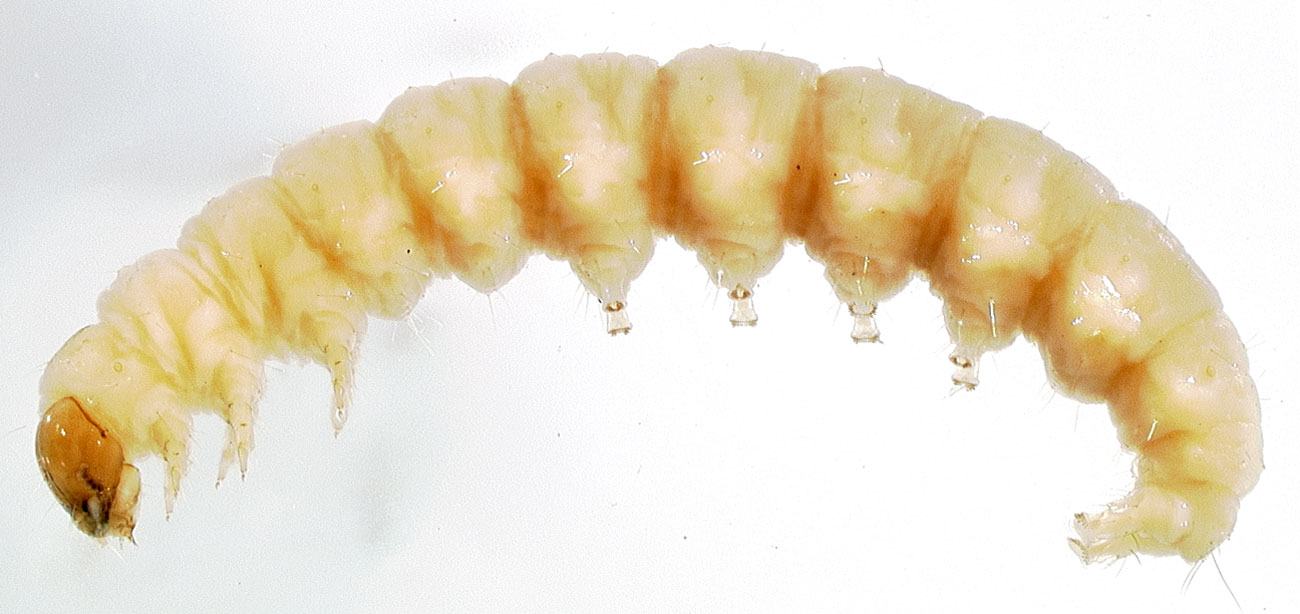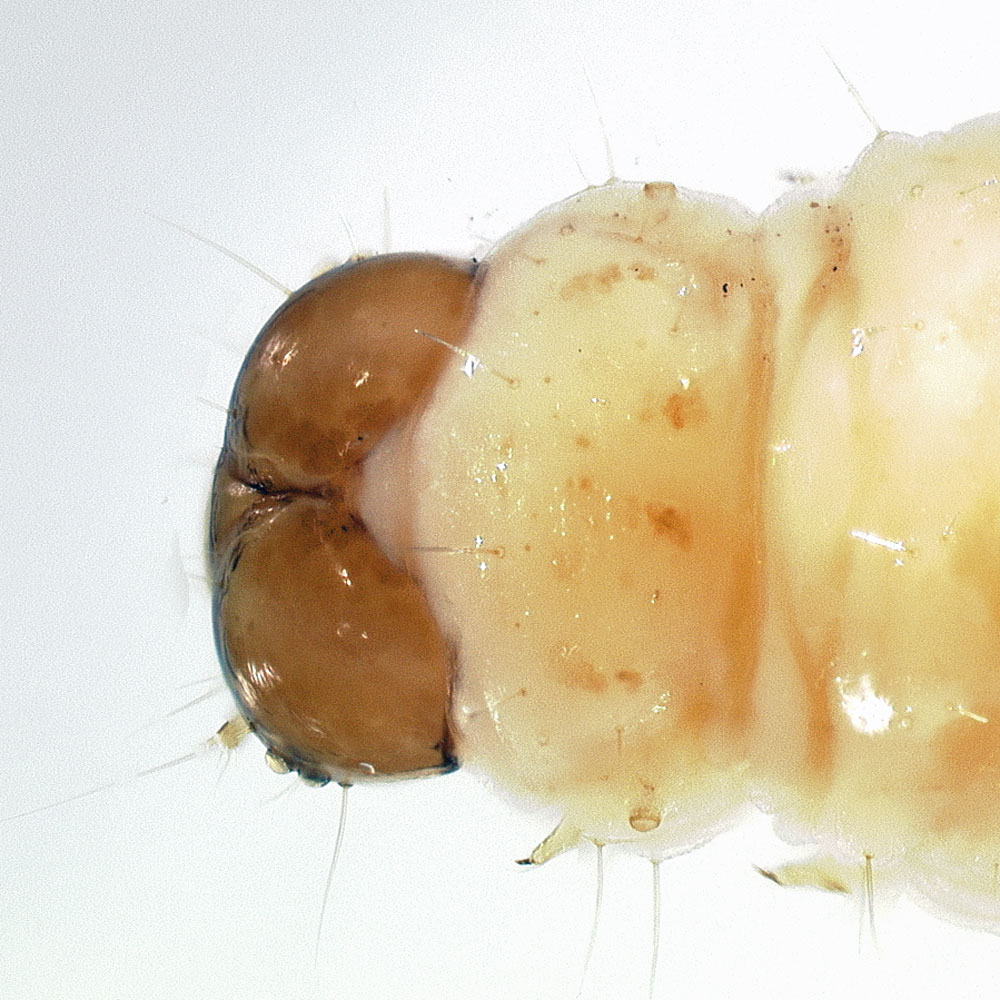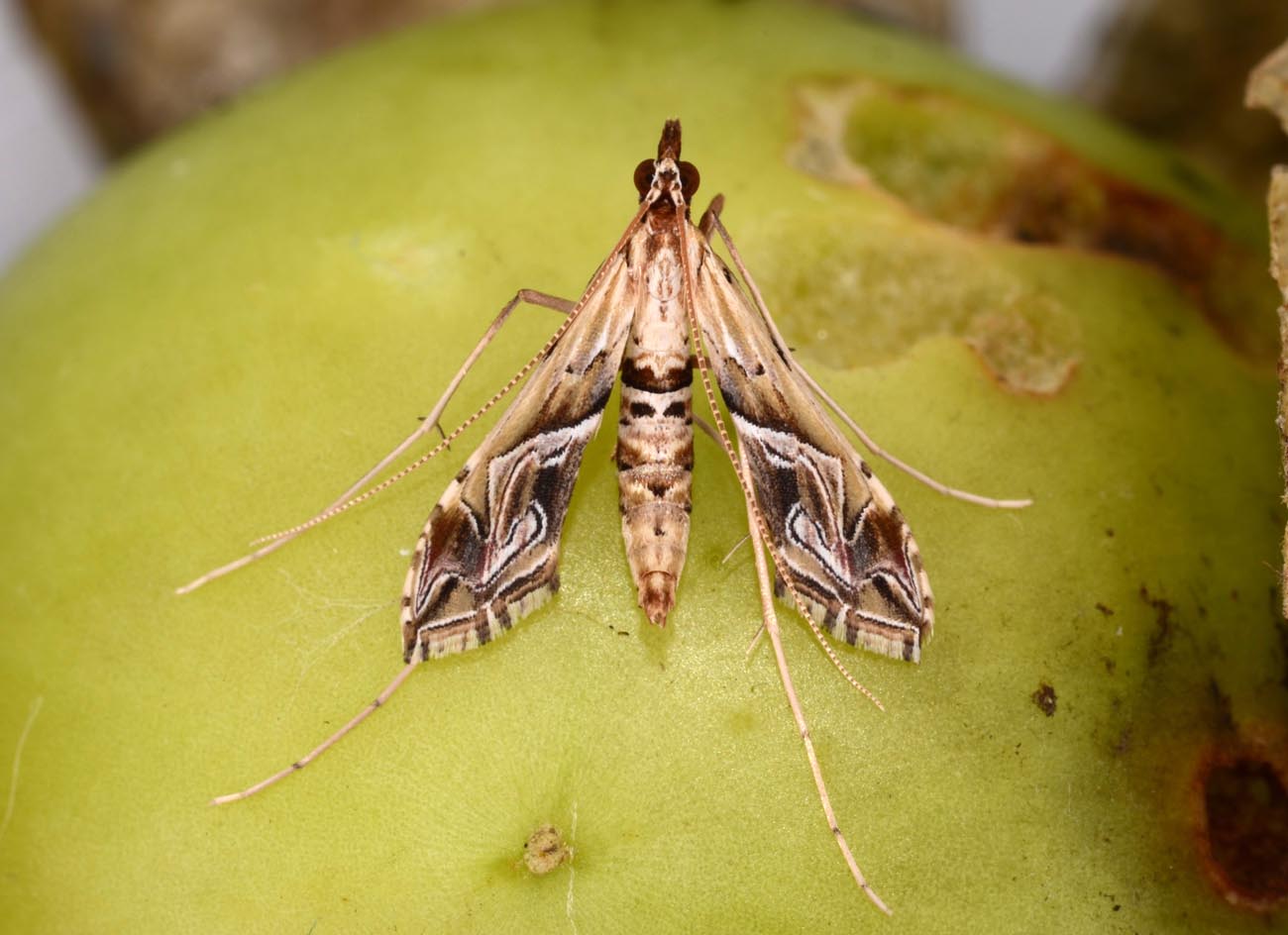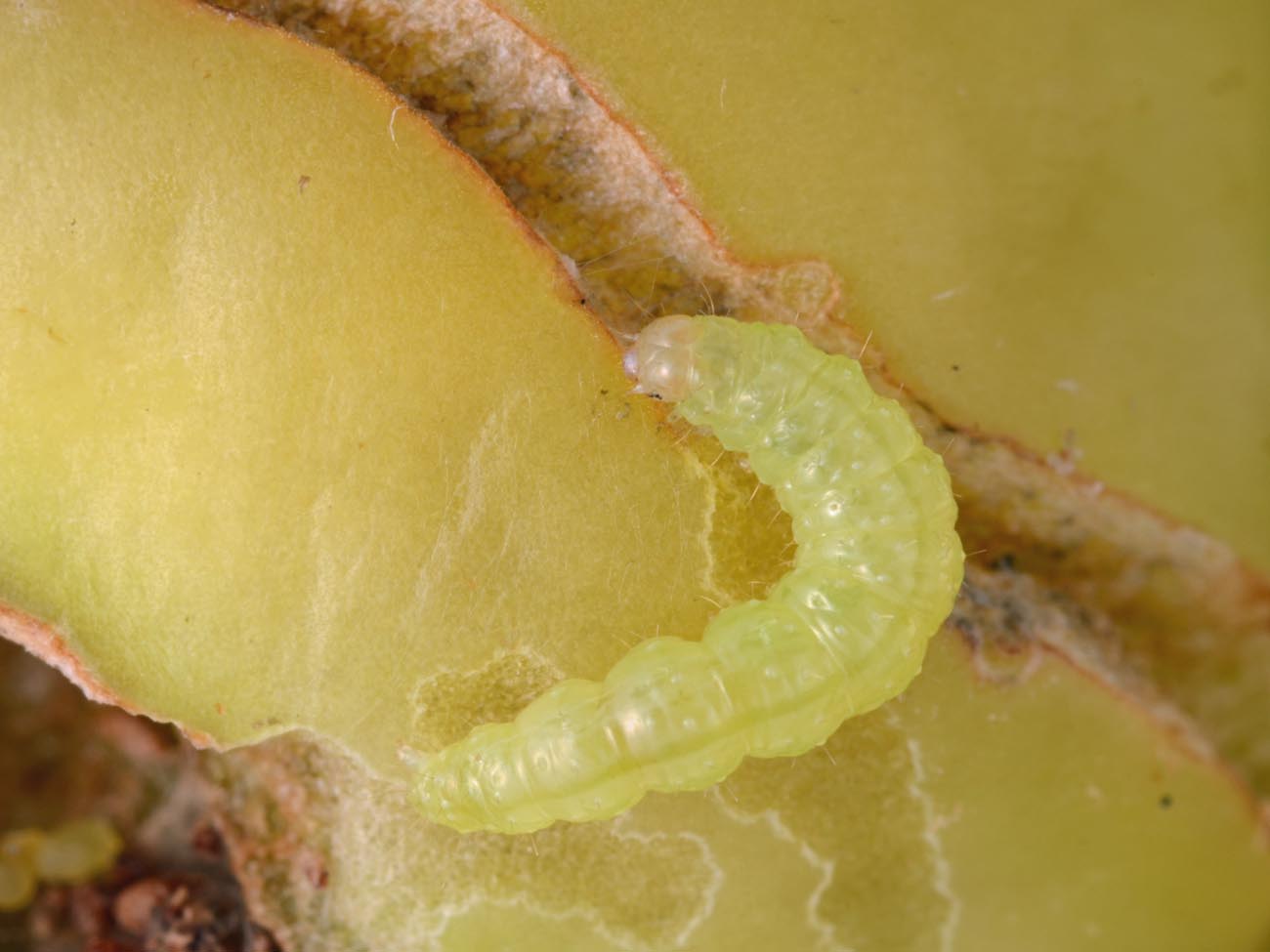Lineodes fontella
|
Lineodes fontella male habitus. Terhune S. Dickel Collection. Scale = 5 mm. |
|
Lineodes fontella female habitus. Scale = 5 mm. |
|
Lineodes fontella head. |
|
Lineodes fontella male genitalia. |
|
Lineodes fontella female genitalia. |
|
Lineodes fontella larva. |
|
Lineodes fontella larva, head and prothotax. |
|
Lineodes fontella adult on tomatillo. © Lyle Buss, University of Florida, Entomology and Nematology Department |
|
Lineodes fontella larva. © Lyle Buss, University of Florida, Entomology and Nematology Department |
Name
Lineodes fontella Walsingham in Hampson, 1913
Common name: none
Original combination: Lineodes fontella Walsingham in Hampson, 1913
Synonyms: Lineodes contortalis Hampson, 1899 (nec Guenée, 1854)
Alternative combinations: none.
Classification: Pyraloidea: Crambidae: Spilomelinae, Leucinodes group
Adult recognition
Forewing length: 6.7–8.7 mm, narrow. The wing pattern is generally pale tan without overtly contrasted areas or white patches. The forewing PM line curves as a distinctive, round-ended hook. In males, the valvae are narrow, and the fibulaFibula:
Any projection on the face of the valva (not including the saccular process, if any).
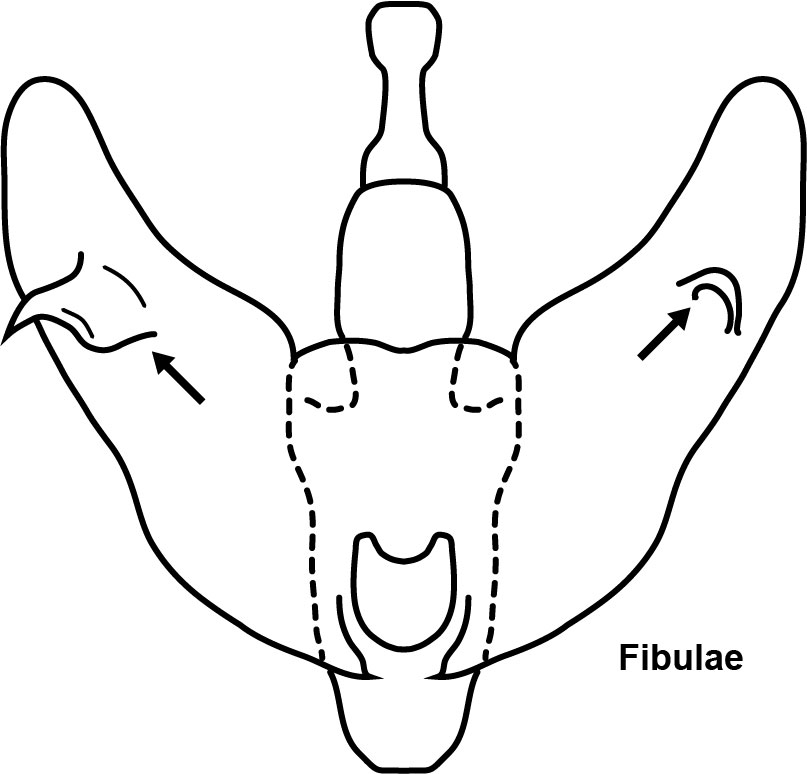 reaches into the distal half and is armed with small, upwardly directed teeth. A very small, straight cornutusCornutus:
reaches into the distal half and is armed with small, upwardly directed teeth. A very small, straight cornutusCornutus:
A usually spine-like sclerite visible within the phallus.
 is present. In females, the narrow ductus bursaeDuctus bursae:
is present. In females, the narrow ductus bursaeDuctus bursae:
The usually narrow duct between the ostium and antrum and the corpus bursae.
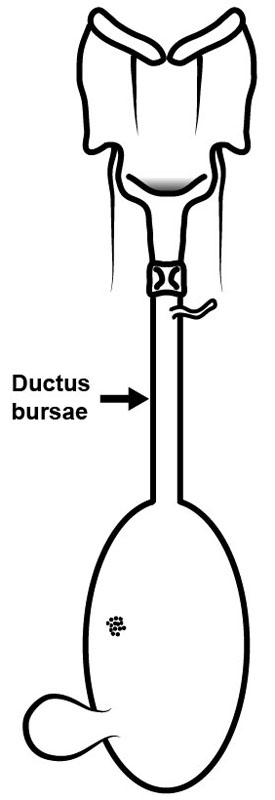 bears a thickened swelling and is more than twice as long as the small corpus bursaeCorpus bursae:
bears a thickened swelling and is more than twice as long as the small corpus bursaeCorpus bursae:
The enlarged, bulbous anterior end of the female genitalia.
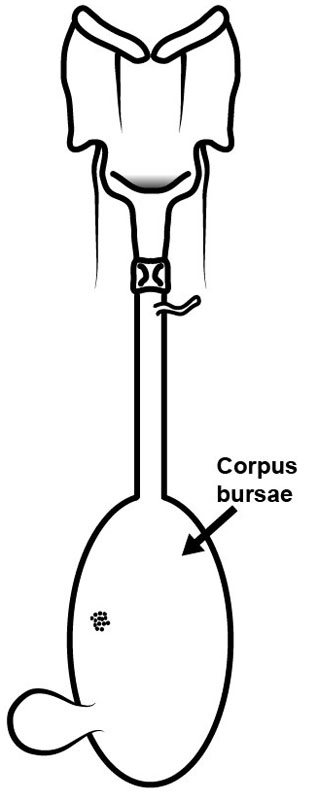 .
.
Immature stages
The larvae are pale and lack pigmentation on the pinacula. The prothoracic shieldProthoracic shield:
Also called the T1 shield. In the larva, the extensive sclerotized area of the dorsal half of the prothorax. It bears six setae on each side, and its color pattern is often diagnostic.
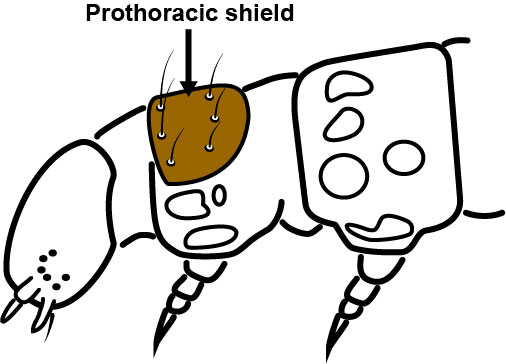 does not have paired black spots as in Lineodes integra. The pattern of setae is otherwise similar, having two SV setae on A1 and SD1 on A8 anterodorsal of the spiracleSpiracle:
does not have paired black spots as in Lineodes integra. The pattern of setae is otherwise similar, having two SV setae on A1 and SD1 on A8 anterodorsal of the spiracleSpiracle:
Respiratory openings, mainly of interest for larval chaetotaxy. One pair on most segments.
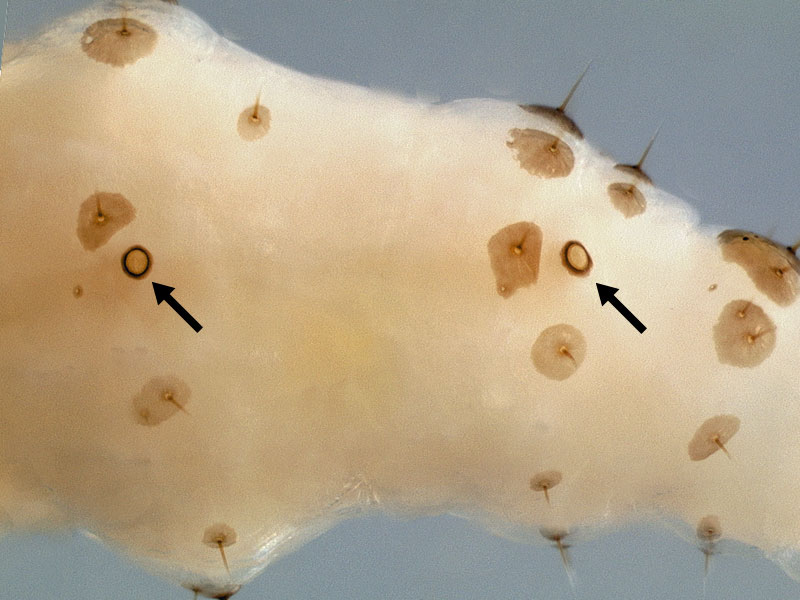 .
.
Similar species
Most other Lineodes species have darker brown wing patterns and contrasted areas of white or yellow. Atomopteryx species have indistinct lines on the wings. Male A. solanalis have a similarly shaped fibulaFibula:
Any projection on the face of the valva (not including the saccular process, if any).
 , but it is shorter and does not reach into the distal half of the valvaValva:
, but it is shorter and does not reach into the distal half of the valvaValva:
One of the pair of large lateral appendages of the male genitalia (pl. valvae).
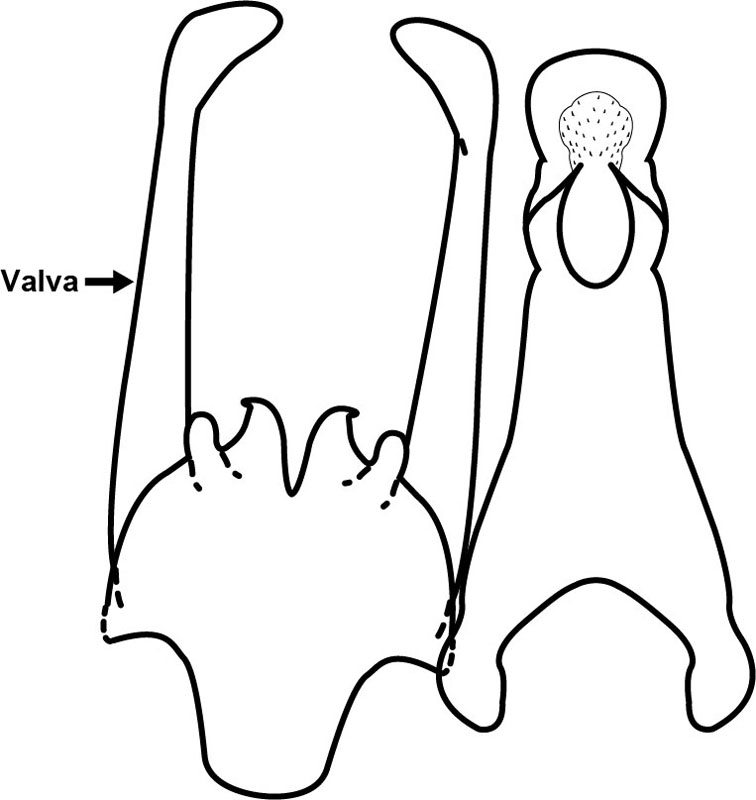 .
.
Behavior
In Florida, larvae have been found April through October. Pupation lasts 5 to 9 days. Larvae feed on fruit of Physalis species (D. Habeck, J. Gillett-Kaufman, obs.), but they rarely have economic importance. The larvae feed on the fruit surface to a depth of a few millimeters, occasionally boring more deeply.
Distribution
Widely distributed in the Neotropics, Caribbean, and southern US, at least as far as North Carolina, also in certain counties of California. US states include AL, FL, GA, LA, MS, TX. Also in Brazil (SP), Cuba, Dominican Republic, French Guiana, Guatemala, Guyana, Honduras, Jamaica, Mexico, Panama.
Hosts
Physalis angulata L. (cutleaf groundcherry)
P. philadelphica Lam. (Mexican groundcherry, tomatillo)
P. pubescens L. (husk tomato)
P. viscosa L. (sticky or starhair groundcherry)
P. walteri Nutt. (as P. viscosa maritima (Curtis) Waters) (Walter’s groundcherry)
Physalis sp. (Mexico, Florida)
Comments
Despite its widespread distribution, little information is available about this species. The distribution and host records, which are consistently on Physalis, are taken from specimens in the U.S. National Museum (NMNH) and unpublished notes in the D.H. Habeck Collection (MGCL). The larval description is based on specimens in the latter collection.
Literature
Habeck, D.H. Unpublished notes.
Photo credits
Figs. 3 & 9: © Lyle Buss, University of Florida, Entomology and Nematology Department

